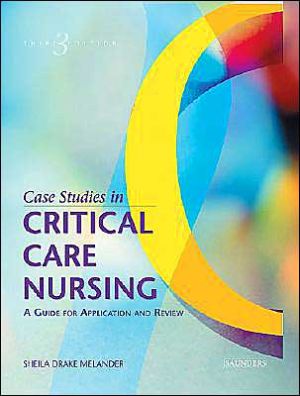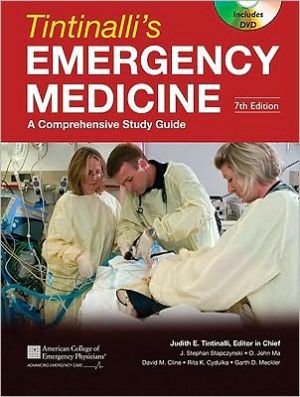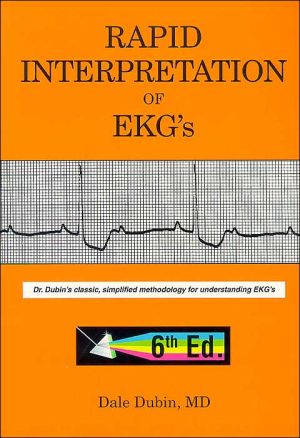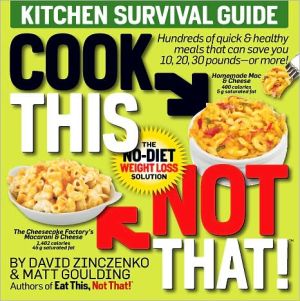Case Studies in Critical Care Nursing: A Guide for Application and Review
Case Studies in Critical Care Nursing contains detailed and up-to-date case studies on critical care conditions with accompanying questions and answers for applied learning of the practice of critical care nursing. The organization of the book has been changed to mirror that of Thelan's Critical Care Nursing, 4th Edition; the chapters in this 3rd edition are grouped according to body systems. This book allows the reader to hone vital skills necessary in a critical care environment, such as...
Search in google:
Case Studies in Critical Care Nursing contains detailed and up-to-date case studies on critical care conditions with accompanying questions and answers for applied learning of the practice of critical care nursing. The organization of the book has been changed to mirror that of Thelan's Critical Care Nursing, 4th Edition; the chapters in this 3rd edition are grouped according to body systems. This book allows the reader to hone vital skills necessary in a critical care environment, such as assessment, critical thinking, decision-making, and judgment. Additionally, this text provides an excellent resource to those practitioners who want to update themselves on current critical care practice prior to taking the CCRN examination.• Each chapter contains the case presentation, questions and answers, and references. • Each case study includes patient assessment and history of the disorder, laboratory observations and results, and pharmacological options for the patient. • Comprehensive discussion and evaluation of the critical thinking questions follow each case study. • Internet resources are included throughout the case studies to further the user's access to information on a variety of disorders. • Contains an all-inclusive glossary of key critical care abbreviations.* Five NEW case studies have been added to this edition (33 total): Cardiac Trauma and Cardiac Tamponade; Hypertensive Crisis/Emergency; Drug Overdose; Disseminated Intravascular Coagulation; and End of Life/Organ Donation.* The critical thinking questions that follow each case study will now begin on a new page, and include space within the book for users to write in their answers, making the book more of workbook.* The trim size has been increased to 8 ½ x 11 inches to accommodate the need for additional space.* Updated real-life case studies reflect the evolving treatment modalities and current pharmacology in the critical care environment.* Each chapter contains the case presentation, Q&A's, and references.* Comprehensive discussion and evaluation of the critical thinking questions follow each case study. Doody Review Services Reviewer:Richard L. Fidler II, CRNP, MSN(Department of Veterans Affairs Washington, DC)Description:This book follows a style typical of much of the lecture format for medical and nursing education, incorporating more of a case-based approach to introduce topical matter for in-depth discussion. The text is easy to follow and flows quickly, making this a handy reference for the bedside.Purpose:The purpose is to serve as a quick reference to commonly seen scenarios in the critical care environment, with implications for monitoring through discharge. These are worthy objectives in disseminating this information in a case-based, organ system clustered book. These objectives of delivering moderate depth of information for quick bedside use are met.Audience:According to the author, this book was intended to be used by students of critical care, but this did not specify which discipline, whether this be nursing, medicine, or other allied health professionals. I do believe that for the experienced critical care professional, this is a quick reference, not offering any really new information, but rather reinforcing what one already knows. For students of any discipline entering into critical care, these cases can serve as a springboard for further research, literature reviews, and more up-to-date information seeking. Features:This book follows an organ system approach to its organization. This begins with cardiovascular disease, progresses to pulmonary disease, includes GI, renal, and infectious disease, some endocrinological disorders and then concludes with some of the multiorgan problems. This book strikes me as a good study tool to use as part of a comprehensive review for the CCRN exam. Some of the tables are well done and actually summarize information, but in several of the chapters, the tables were redundant. The lack of diagrams, algorithms, pictures of anatomy, and invasive monitoring tracings is particularly troubling for a book in critical care nursing. In my opinion, the difference between acute care and truly critical care is the ability to use invasive monitoring and devices ( PA catheters, intraaortic balloon pumps, left ventricular assist devices, CVVH/D, etc.) and this book is deficient in the explanation of hemodynamics.Assessment:This is a good starting point for students seeking some beginning knowledge prior to entering a critical care environment. The case-based approach to conveying information is very appealing. This is a good bedside text to keep on hand in a critical care area, because it is brief enough that a particular topic can be read in 5-10 minutes, and the topics covered are commonly seen in the hospital. However, compared to books like Marino's The ICU Book, 2nd edition (Lippincott Williams & Wilkins, 1998), this one does not offer the depth in topical areas, nor does it offer the breadth of topics covered.
1Percutaneous Transluminal Coronary Angioplasty and Thrombolytic Therapy in Myocardial Infarction22Coronary Artery Bypass Graft233Cardiogenic Shock and Anterior Wall Myocardial Infarction434Non-Q-Wave Myocardial Infarction615Heart Failure706Carotid Endarterectomy867Abdominal Aortic Aneurysm968Cardiac Trauma and Cardiac Tamponade1059Pulmonary Embolism11810Pulmonary Contusion14111Chronic Obstructive Pulmonary Disease with Pneumonia15012Acute Respiratory Distress Syndrome16413Subarachnoid Hemorrhage with Aneurysm17614Head Trauma and Subdural Hematoma19415Epidural Hematoma21316Acute Renal Failure22017Chronic Renal Failure and Renal Transplantation23218Gastrointestinal Tract Bleeding25619Acute Pancreatitis26520Peritonitis28521Esophageal Varices29622Adrenal Crisis30823Syndrome of Inappropriate Secretion of Antidiuretic Hormone32124Diabetic Ketoacidosis33725Multiple Organ Dysfunction Syndrome35226Sepsis/Septic Shock37027Burns38628Acquired Immunodeficiency Syndrome41129Blunt Abdominal Trauma43030Hypertensive Crisis/Emergency44631Drug Overdose45632Disseminated Intravascular Coagulation46433End of Life Issues476Abbreviations484Index489
\ From The CriticsReviewer: Richard L. Fidler II, CRNP, MSN(Department of Veterans Affairs Washington, DC)\ Description: This book follows a style typical of much of the lecture format for medical and nursing education, incorporating more of a case-based approach to introduce topical matter for in-depth discussion. The text is easy to follow and flows quickly, making this a handy reference for the bedside.\ Purpose: The purpose is to serve as a quick reference to commonly seen scenarios in the critical care environment, with implications for monitoring through discharge. These are worthy objectives in disseminating this information in a case-based, organ system clustered book. These objectives of delivering moderate depth of information for quick bedside use are met.\ Audience: According to the author, this book was intended to be used by students of critical care, but this did not specify which discipline, whether this be nursing, medicine, or other allied health professionals. I do believe that for the experienced critical care professional, this is a quick reference, not offering any really new information, but rather reinforcing what one already knows. For students of any discipline entering into critical care, these cases can serve as a springboard for further research, literature reviews, and more up-to-date information seeking. \ Features: This book follows an organ system approach to its organization. This begins with cardiovascular disease, progresses to pulmonary disease, includes GI, renal, and infectious disease, some endocrinological disorders and then concludes with some of the multiorgan problems. This book strikes me as a good study tool to use as part of a comprehensive review for the CCRN exam. Some of the tables are well done and actually summarize information, but in several of the chapters, the tables were redundant. The lack of diagrams, algorithms, pictures of anatomy, and invasive monitoring tracings is particularly troubling for a book in critical care nursing. In my opinion, the difference between acute care and truly critical care is the ability to use invasive monitoring and devices ( PA catheters, intraaortic balloon pumps, left ventricular assist devices, CVVH/D, etc.) and this book is deficient in the explanation of hemodynamics.\ Assessment: This is a good starting point for students seeking some beginning knowledge prior to entering a critical care environment. The case-based approach to conveying information is very appealing. This is a good bedside text to keep on hand in a critical care area, because it is brief enough that a particular topic can be read in 5-10 minutes, and the topics covered are commonly seen in the hospital. However, compared to books like Marino's The ICU Book, 2nd edition (Lippincott Williams & Wilkins, 1998), this one does not offer the depth in topical areas, nor does it offer the breadth of topics covered.\ \ \ 3 Stars from Doody\ \








